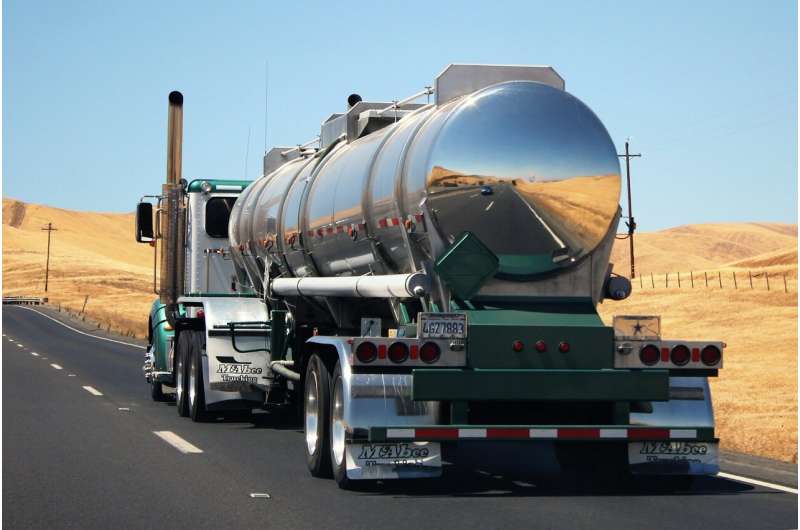
Australia’s Climate Change and Energy Minister, Chris Bowen, recently stated that the new emissions data indicates that the country is “on track” to meet its 2030 climate goals set by the Paris Agreement. In 2024, Australia’s greenhouse gas emissions were “27% lower than in 2005“. Sounds promising, right?
Yes and no. Australia is still depending on changes in land use to offset emissions released into the atmosphere.
In simpler terms, our greenery is now absorbing more carbon dioxide than it did in 2005. This decrease is largely attributed to the Land Use, Land-Use Change, and Forestry (LULUCF) sector, which has significantly contributed to lowering emissions.
If we don’t factor in land use, the true decrease in emissions is only about 3% since 2005, not 27%.
If Australia is serious about hitting net zero by 2050, it must confront the reality around fossil fuels, which impact nearly every part of our lives—not just transportation and energy production. Alternatives exist, but they are often difficult to find and can be expensive.
How Fossil Fuel Exports Affect Emissions Locally and Globally
Australia is among the largest fossil fuel exporters in the world. The coal, oil, and natural gas we send abroad is either burned or used in conjunction with our large iron ore exports to produce iron. Since the resulting emissions occur overseas, they aren’t included in Australia’s emissions stats.
This aligns with our commitments under the Paris Agreement. However, many argue that despite not burning these exports ourselves, we must recognize our significant role in global emissions. Adjustments may be necessary in future reports.
Australia’s export emissions could be three times higher than our domestic emissions, which have been steadily rising over the past decade.
However, the extraction and processing of fossil fuels for export do contribute to Australia’s domestic emissions, mainly through “fugitive emissions,” which are the inevitable leaks that happen during the extraction, storage, transport, and processing of fossil fuels.
In 2024, fugitive emissions made up 10.6% of total emissions, significantly more than emissions from industrial processes (6.8%).
Worryingly, recent analyses indicate that fugitive emissions might be underestimated. Because measuring these emissions is complicated, they are often calculated using averages, which might not accurately represent actual emissions.
Currently, regarding fugitive and export emissions, Australia is not on track to meet its 2030 targets. Recent approvals for fossil fuel projects focused on exports, like the North West Shelf gas project, suggest that we might be going in the wrong direction.
The Shift to Renewable Energy
Phasing out old coal power stations in favor of renewable energy sources like solar and wind reduces emissions. The electricity sector has seen a notable decline in emissions by 23.7% compared to 2005 levels, which is encouraging. However, this reduction is still small enough to be affected by seasonal changes in Tasmania’s hydropower output.
At least there’s a strategy in place for this energy transition. Progress is happening, albeit slowly.
However, we will need a significantly greater amount of renewable energy in the future. The National Electricity Market may require up to three times its current capacity to meet future energy demands stretching toward 2050.
To generate enough additional green energy for producing green value-added products, a significantly higher output will be necessary.
Australia’s Renewable Energy Challenge
Discussions about transitioning from fossil fuels often overlook their deep integration in daily life.
It’s not just the fuel for our vehicles; it’s also the roads we drive on. It’s not only the power we use in hospitals; it includes the steel that constructs them and the pharmaceuticals we depend on.
Around 13% of fossil fuels globally are not burned, but instead, used to create essential chemicals. What’s the alternative?
Clean electricity serves as the solution.
We can produce hydrogen from water using electrolysis. This hydrogen can substitute fossil fuels in manufacturing, leading to products like green steel and fertilizers.
When hydrogen is paired with non-fossil carbon sources, it can also create renewable fuels, including sustainable aviation fuel, along with greener petrochemicals for industrial uses, such as ethanol, propylene, and ethylene, which typically come from fossil fuels.
This process requires a lot of energy. Thankfully, Australia possesses all the elements needed to foster a thriving green industry that extends beyond just renewable electricity.
Currently, producing these chemicals without fossil fuels tends to be more expensive. This has led some companies and state governments to scale back their investments in green hydrogen.
People primarily discuss green hydrogen in terms of energy storage or export, but it can also facilitate the shift away from fossil fuels in various sectors. The technology to create these chemicals and products without emissions is progressing steadily toward becoming more cost-effective.
If Australia can successfully transition to fossil-free alternatives for petrochemicals, it could add more value domestically instead of merely exporting raw materials. For instance, we could export finished products like iron instead of just iron ore. We could ship out methanol or ammonia rather than hydrogen, and sell clothing rather than just raw wool.
Can Heavy Industry Shift to Renewables?
Recently, Bowen mentioned some aspects of the 2024 emissions data as “encouraging,” noting that industrial emissions are significantly lower than 2021.
However, this reduction is partly due to a decline in manufacturing output. Australia’s domestic manufacturing base has been consistently shrinking even as fossil fuel extraction has increased.
Without ramping up green manufacturing—by replacing fossil fuel exports with renewable products and fuels—we risk continuing the cycle of high exported emissions and onshore fugitive emissions.
No adjustment to land use can change that reality.
If you would like to see similar Tech posts like this, click here & share this article with your friends!

